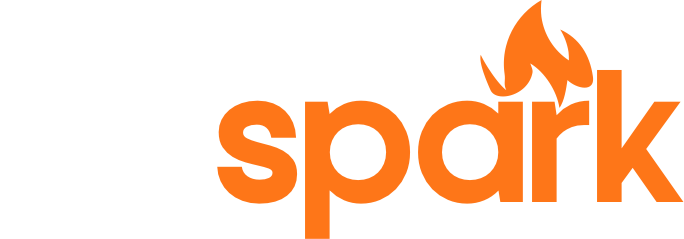Understanding Blockchain in Simple Terms
Did you know blockchain tech handles over $10 trillion in global transactions yearly? It’s not just for Bitcoin. It’s a digital ledger tech that’s changing how we share info and value securely.
When you hear blockchain, you might think of Bitcoin or complex digital systems. But in simple terms, blockchain is a digital record-keeping method. It stores info across many computers, making it hard to alter or hack.
Think of a shared digital notebook where every entry is checked by many. And once written, it can’t be changed. That’s what blockchain is all about—a secure, open way to track transactions and data without a single authority.
Blockchain technology offers a new way to think about digital trust. It breaks down old barriers in finance, tech, and sharing information. It creates an open, verifiable system that anyone can get and join in.

Key Takeaways
- Blockchain is a decentralized digital ledger technology
- Transactions are transparent and nearly impossible to manipulate
- No single entity controls the entire blockchain network
- Provides enhanced security compared to traditional record-keeping
- Applicable across multiple industries beyond cryptocurrency
What is Blockchain in Simple Words
Blockchain technology is a new way to store and share information. It’s like a digital ledger that’s open, safe, and not run by one person. This makes blockchain technology easy to understand.
At its heart, blockchain is a way to keep digital records without a single boss. It lets many people check and agree on information. The term “cryptocurrency blockchain” is more than just digital money. It’s a key technology for changing how we deal with data and transactions.
Key Components of Blockchain Technology
To get blockchain, you need to know its main parts:
- Distributed Network: Many computers (nodes) keep the blockchain
- Cryptographic Security: Strong encryption keeps data safe
- Immutable Records: Once data is in, it can’t be changed
The Building Blocks of Digital Ledgers
Digital ledgers are like shared spreadsheets. Everyone can see them, but no one can change them. Each deal is a “block” that links to others, making a chain of checked info.
Understanding Decentralization
Decentralization means no one group controls everything. Instead, many people work together to keep the blockchain. This way, there’s no single weak spot and everything is more open.
“Blockchain is to trust what the internet was to communication” – Unknown Technologist
The Evolution and History of Blockchain Technology

Blockchain technology started with a big moment in digital history. It all began in 2008 when Satoshi Nakamoto, an unknown person or group, introduced Bitcoin. This was the first real use of blockchain.
The early days of blockchain saw key moments that changed digital transactions. It’s about making a safe, open way to record info that can’t be changed later.
- 2008: Bitcoin whitepaper published, introducing the concept of a decentralized digital currency
- 2013: Ethereum emerges, expanding blockchain beyond cryptocurrency
- 2015: Smart contracts become a game-changing innovation
As blockchain grew, it went beyond just being a digital currency. Banks, tech firms, and governments started seeing its value for keeping records safely and openly. Its decentralized nature brought new chances for digital trust and checks.
Blockchain’s use spread across many fields. It’s now used in supply chains and even in keeping health records. It’s changing how we handle and share important info.
“Blockchain is to trust what the internet was to communication” – Unknown Tech Innovator
Learning about blockchain’s history helps us see its big impact. What started as a small tech has become a key player in digital innovation. It’s changing how we view data, trust, and online interactions.
How Blockchain Technology Actually Works
Blockchain technology might seem complex, but it’s actually quite simple. Let’s explore how this digital system changes how we store and share information.
At its heart, blockchain is a digital ledger that records transactions on many computers. Its magic lies in being transparent, secure, and decentralized.
The Magic of Cryptography in Blockchain
Cryptography is the key to blockchain’s success. It makes sure:
- Every transaction is securely encrypted
- Data can’t be altered without being caught
- Users stay anonymous, but transactions are clear
Understanding Digital Blocks and Chains
Think of blockchain as a digital chain of blocks. Each block holds a set of transactions that are hard to tamper with.
- New transactions are grouped into a block
- The block is checked by the network
- After verification, the block is added to the chain
How Consensus Keeps Everything Honest
The consensus mechanism is blockchain’s truth-checker. It makes sure everyone agrees on transactions, keeping the system honest.
“Blockchain is not just a technology, it’s a new way of thinking about trust and transparency in digital transactions.”
Once you grasp how blockchain works, you’ll see it’s a powerful tool. It’s not just tech; it’s a way to ensure secure, open digital interactions.
Core Features That Make Blockchain Unique

Blockchain is a standout technology compared to traditional digital systems. It has unique features that make it groundbreaking across many industries.
Blockchain changes how we view digital interactions and data management. Let’s look at the key features that make it special:
- Immutability: Once data is recorded, it cannot be altered or deleted
- Transparency: Every transaction is visible to network participants
- Decentralization: No single authority controls the entire network
- Enhanced Security: Cryptographic protocols protect against unauthorized access
Blockchain’s design keeps your digital interactions safe and verifiable. Its distributed nature means there’s no single point of failure. This makes it a strong system for recording and tracking information.
| Feature | Description | Impact |
|---|---|---|
| Immutability | Permanent, unalterable record keeping | Prevents fraud and ensures data integrity |
| Transparency | Open visibility of all transactions | Builds trust among network participants |
| Decentralization | Distributed network without central control | Reduces manipulation and single-point vulnerabilities |
Understanding these basics shows why blockchain is a game-changer. It’s not just for cryptocurrency. It offers new ways for secure and transparent digital interactions across industries.
Understanding Smart Contracts and Their Applications

Smart contracts are a big deal in blockchain, changing how we make digital deals. They are self-running contracts with rules written in code. This means they can handle transactions on their own, without needing a middleman.
In simple terms, smart contracts work like digital vending machines. They do things automatically when certain conditions are met. This makes sure agreements are clear and safe in many fields.
Exploring Different Contract Types
There are many kinds of smart contracts:
- Financial Contracts: They handle things like loans and insurance payouts.
- Legal Agreements: They check if property has been transferred correctly or if rights are being respected.
- Supply Chain Contracts: They track where products are and if they are real.
- Healthcare Contracts: They manage patient data and medical records.
Advantages of Automated Agreements
Smart contracts have lots of good points:
- They make things clear and open.
- They cut down on costs.
- They are very secure.
- They work fast.
- They get rid of risks from middlemen.
Smart contracts are making digital deals better. They use blockchain to make sure things are safe, efficient, and fair.
Different Types of Blockchain Networks

Digital ledger technology comes in many forms to fit various needs. It shows three main types of networks, each with its own role in the digital world.
Public blockchain networks are the most open and transparent. Anyone can join, check transactions, and keep the blockchain. Bitcoin and Ethereum are examples of public networks without a central boss.
- Completely decentralized
- Open participation
- Maximum transparency
Private blockchain networks are more restricted. They let only certain groups in, keeping things private. These networks are safer and quicker than public ones.
- Controlled access
- Improved privacy
- Faster transaction speeds
Consortium blockchain networks are a mix of public and private. Many groups work together, sharing power. Banks and supply chain companies often use this type.
Blockchain networks keep growing, bringing new ideas to many fields.
Knowing about these types helps you pick the right blockchain for your needs.
Real-World Applications of Blockchain Technology
Blockchain technology is changing many industries with new solutions. It’s a secure, open digital ledger that changes how we handle information and deals.
As more people learn about blockchain, let’s see how it’s changing things in different areas.
Financial Innovations
Blockchain is changing finance by adding security and speed. Banks and financial groups use it to:
- Lower transaction costs
- Speed up international payments
- Boost fraud protection
- Make financial systems clearer
Supply Chain Transformation
In supply chains, blockchain helps track and check things. Companies can:
- Keep an eye on where products come from
- Check if goods are real
- Manage stock better
- Lessen the risk of fake products
Healthcare Revolution
Healthcare sees blockchain’s value in keeping medical data safe and easy to share. It’s used for:
- Keeping patient records safe
- Tracking medicines
- Sharing info securely
- Streamlining research
“Blockchain is not just a technology, it’s a paradigm shift in how we manage digital interactions.” – Tech Innovation Expert
Blockchain keeps growing, bringing big changes to many fields.
Most Read:- The Easy Way to Buy Bitcoin for the First Time in 2025
Common Misconceptions About Blockchain
Blockchain technology is often misunderstood, leading to many myths. Let’s debunk some of these myths about this digital system.
- Blockchain is Only for CryptocurrencyBlockchain started with Bitcoin, but it’s not just for digital money. It’s used for secure, transparent records in many industries.
- Blockchain is Completely AnonymousBlockchain isn’t completely anonymous. Transactions are pseudonymous, leaving a digital footprint that can be traced.
- Blockchain is Completely UnhackableBlockchain is very secure, but no system is completely safe. Its safety depends on how it’s set up and the network’s protocols.
“Blockchain is not just a technology, it’s a paradigm shift in how we understand digital trust and transparency.” – Blockchain Expert
To understand blockchain, we must clear up these myths. It’s a complex but powerful way to keep digital records, giving high security and decentralization.
Blockchain Myths Debunked
Many people think blockchain is hard to understand. But it’s not. It’s a simple way to share data safely.
Some think blockchain will replace everything. But it won’t. It works with other tech to make things better.
Others believe blockchain is instant. But it’s not. It takes time to check transactions, depending on how busy the network is.
Knowing these facts helps you see what blockchain can do and what it can’t.
The Future of Blockchain Technology
Blockchain is changing the digital world fast. It’s not just for money anymore. More people are using it for different things.
The future of blockchain looks good. It will bring new ideas to many areas. It’s making things better for businesses and people.
Emerging Trends and Innovations
- Increased integration of artificial intelligence with blockchain networks
- Enhanced privacy and security protocols
- Expansion of decentralized finance (DeFi) platforms
- Development of more energy-efficient consensus mechanisms
Potential Industry Transformations
| Industry | Potential Blockchain Impact |
|---|---|
| Healthcare | Secure patient data management |
| Supply Chain | Transparent tracking and verification |
| Government | Improved record-keeping and voting systems |
| Education | Verified credential authentication |
“Blockchain is not just a technology, it’s a paradigm shift in how we understand digital trust and collaboration.” – Vitalik Buterin
As blockchain grows, expect easier apps. Soon, it will be for everyone. The future is open, secure, and fair.
Getting Started with Blockchain Technology
Starting with blockchain might seem hard. But it’s easier than you think. This guide will help you start your blockchain journey.
To start, look at these learning paths:
- Online Learning Platforms
- Coursera blockchain fundamentals courses
- Udemy blockchain technology workshops
- edX cryptocurrency and blockchain programs
- Practice Platforms
- Coinbase Learn
- Binance Academy
- MetaMask learning resources
Learning blockchain needs hands-on practice. Start by making digital wallets and checking out exchanges. This will give you real experience.
| Learning Resource | Difficulty Level | Cost |
|---|---|---|
| Coinbase Learn | Beginner | Free |
| Blockchain Certification Courses | Intermediate | Paid |
| Developer Bootcamps | Advanced | Varies |
Blockchain doesn’t have to be hard for beginners. Start slow, stay curious, and keep learning. This way, you’ll learn more over time.
Conclusion
Blockchain is a digital ledger technology that’s changing how we handle digital info. You’ve learned about its key features: transparency, security, and decentralization. These are the building blocks of a new digital world.
This technology is a game-changer for many industries, from finance to healthcare. It creates secure, unchangeable records. This can greatly improve how we manage data and make transactions.
Blockchain is more than just tech; it’s a shift in how we do things. It gives power back to people by cutting out middlemen. This makes systems more open and efficient.
The future of blockchain looks very promising. It’s set to bring even more advanced uses. Whether you’re into tech, business, or just curious, keeping up with blockchain is key. Get ready for the big changes it will bring.
FAQ
What is blockchain in simple words?
Blockchain is a digital book that keeps track of deals on many computers. It makes sure no one can change any record later. It’s like a shared, open book that everyone can see but can’t change without everyone knowing.
This makes it hard to mess with. It’s a safe, shared way to keep track of things.
How does blockchain technology actually work?
Blockchain makes a chain of digital blocks with transaction records. Many computers check each block. This makes it safe and open.
When a new deal happens, it goes into a block. When that block is full, it links to the last block. This makes a chain that’s hard to change.
Is blockchain only used for cryptocurrency?
No, blockchain is used for more than just Bitcoin. It’s used in supply chains, healthcare, voting, real estate, and more. It’s a flexible tech that makes systems safer and more efficient.
Is blockchain completely secure?
Blockchain is very secure, but not 100% safe. It’s safe because it’s on many computers and uses strong codes. But, like all tech, it can have weak spots.
It’s safer than old systems, though.
How can I start learning about blockchain?
You can learn about blockchain online. Look for courses, YouTube videos, websites, and books. Sites like Coursera and Udemy have good courses.
Joining blockchain groups can also help. You can learn from others and share your own experiences.
What makes blockchain different from traditional databases?
Blockchain is different because it’s not run by one person. It’s on many computers. This means no one can control it all.
Every deal is open, recorded forever, and checked by many. This makes it hard to mess with.
Are there different types of blockchain?
Yes, there are three main types. Public blockchains, like Bitcoin, are open to everyone. Private blockchains are only for certain groups. Consortium blockchains are a mix.
Each type is used in different ways.
How energy-intensive is blockchain technology?
Some blockchains, like Bitcoin, use a lot of energy. But new tech, like proof-of-stake, uses less. These new methods are more energy-friendly and keep things secure.
Can blockchain be used in government services?
Yes! Governments are looking at blockchain for things like voting, keeping records, and checking identities. It’s good for making things clear and stopping cheating.
What are smart contracts?
Smart contracts are like self-running vending machines. They do things automatically when certain things happen. They don’t need anyone to help them work.


